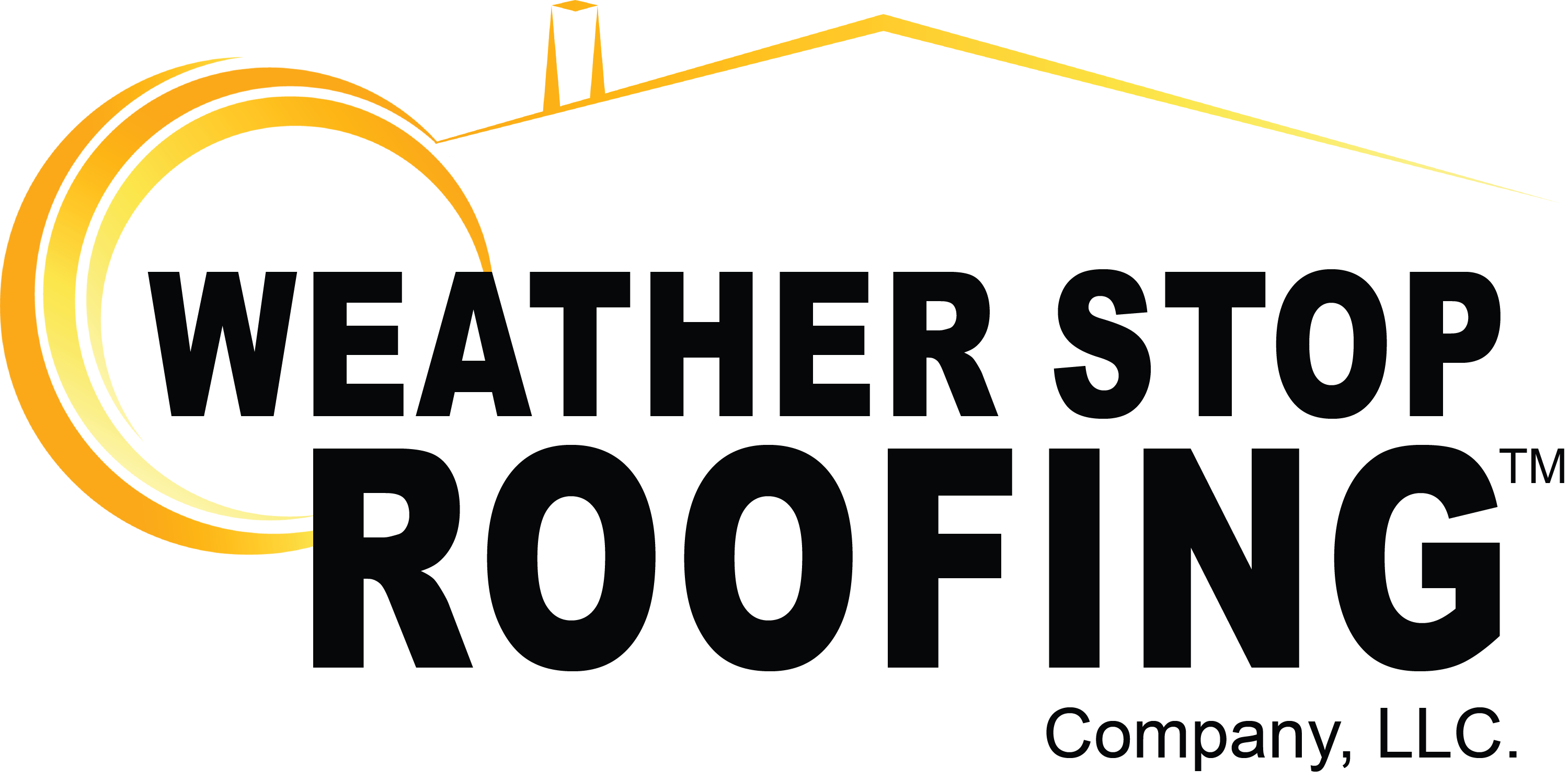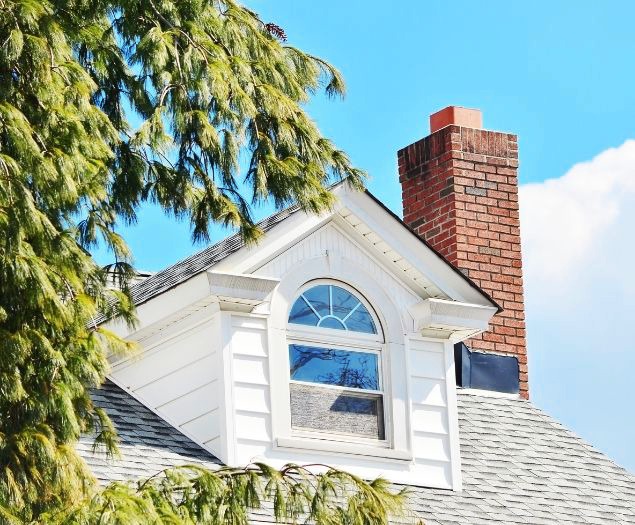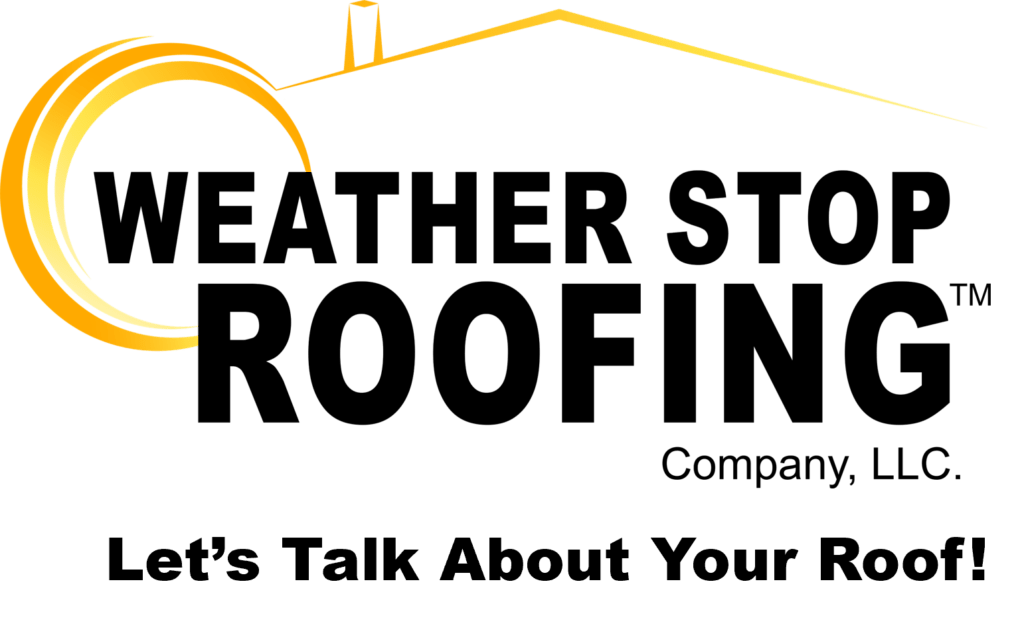Worried about how trees affect your roof? Trees in close proximity to your roof can cause many problems and potentially shorten the effective life of your roof. Yet, with proper care and placement, trees can also have many benefits when it comes to your roof. In this article we go into all you need to know when considering whether to keep, trim, remove, or plant a tree near your house.
falling trees and branches
There are minor and significant ways in which trees affect your roof. The most common thing people picture when considering trees close to a house is the possibility of them falling and damaging not only their roof, but the home underneath. This also poses a dangerous risk to those residing in the home who could be severely harmed by a falling tree or large branch.
We have all seen those terrible photos following a severe windstorm or tornado. Full size trees with their roots ripped from the ground or large branches broken off by strong winds, sending them crashing onto a roof and causing devastating damage to a home.
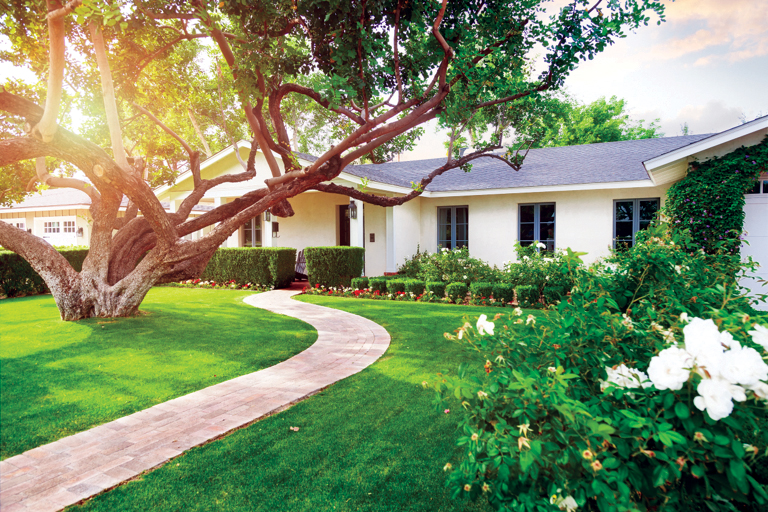
While it may seem extreme or rare, this is a very legitimate risk of having trees too close to a home, and one which should be taken into consideration when deciding whether or not to have a tree or its branches removed. Due to the risk trees can pose to your home and family, you should also be mindful of where you plant new trees in your yard.
trees may cause your roof to hold moisture
One of the more common ways in which close-proximity trees affect your roof has to do with the shade they create.
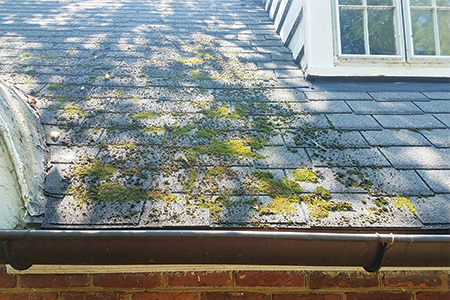
Excess moisture, especially in the presence of plant growth, can add extra weight and stress to your roof system. If left untreated, damage to your shingles or other roof system can lead to rot and decay in the substrate underneath. This affects the integrity of the wood decking that serves as the attachment and support structure for your entire roof system.
When a tree excessively shades your roof, it prevents moisture from evaporating efficiently. Consequently, the roof absorbs excess moisture. This leads to algae, moss, and mold growth on your roof. The presence of plant and fungal growths on your roof is not only unsightly, but can also shorten the lifespan of your roof by causing damage to your shingles over time.
The longer the damage goes unaddressed, the more extensive and costly the repairs. In severe cases your entire home may become at risk, increasing the likelihood that a tear-off and full roof replacement will be necessary.
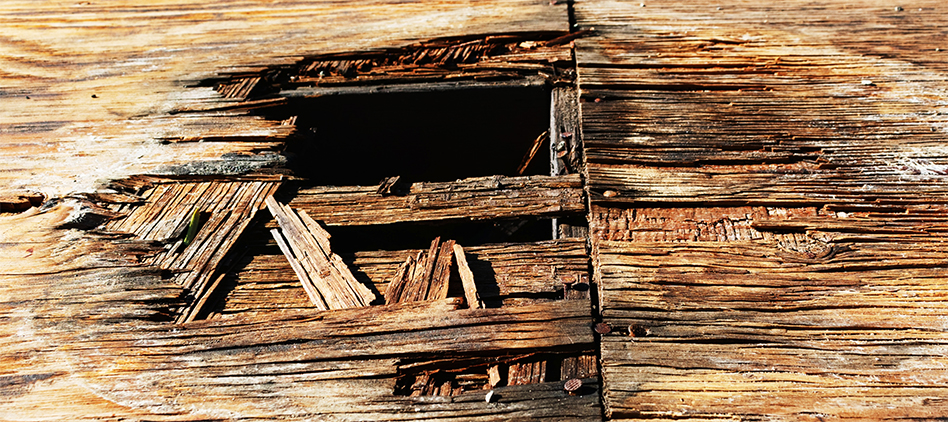
branches physically damage shingles
Whether branches are touching your roof or hanging very near its surface, even moderate winds can cause them to scratch your shingles. The outer protective layer of a shingle is made up of tiny granules which serve to hold color and protect your roof from the damaging effects of the sun. Over time, granule loss is inevitable due to the normal wear and tear roofs experience. This is typically what brings a roof to the end of its useful life. However, excessive scratching from tree branches can speed up the process of granule loss, causing shingle breakdown, discoloration splotches on the roof, and/or reduced heat reflecting efficiency, all of which can impact aesthetic and significantly shorten the lifespan of your roof.
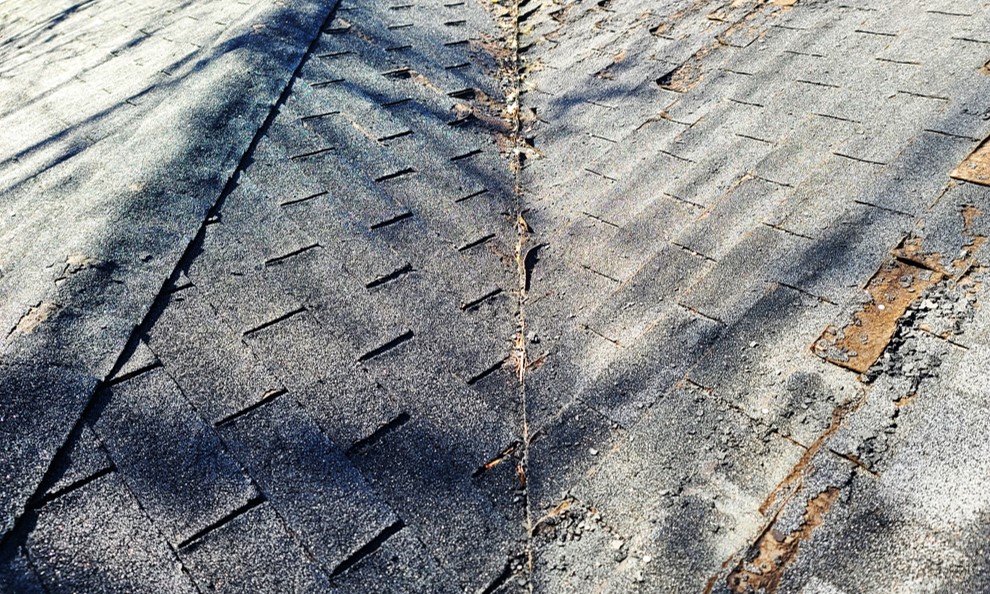
leaves and needles damage roofs and affect gutter/downspout efficiency
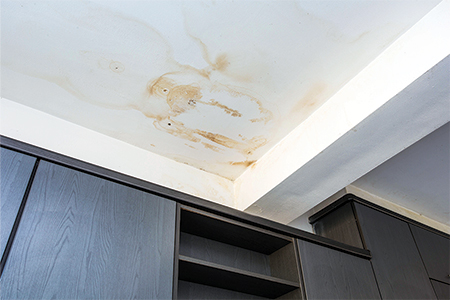
Your gutters and downspouts collect water runoff and push it away from the foundation of your home. Regular gutter cleaning is essential to maintaining healthy, working gutters when you have trees which drop leaves over your home.
Without proper and regular maintenance, your gutter system may become clogged with tree debris and be unable to properly revert water. This not only damages your roof, but could affect the integrity of your foundation and lead to leaks in your attic, top floor, and/or basement.
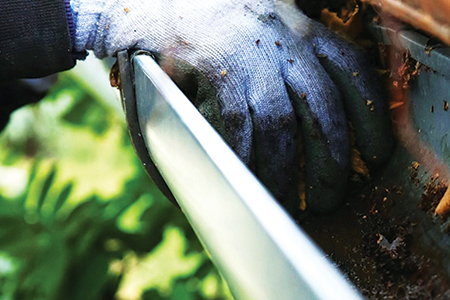
dropping nuts and fruits damage roofs in more ways than one
Falling debris is another way in which trees affect your roof. If you have a tree which produces nuts or fruit, you have additional potential problems. Just like leaves and needles, nuts and fruits can clog your gutters and lead to rotting. Furthermore, certain nuts, such as black walnuts, and fruits, such as mulberries, can stain your roof and cause color splotchiness in areas below branches. Due to the weight of some nuts and depending on from what height they are falling, they can also cause impact-related damage similar to hail. Shingles with this sort of damage must be repaired as soon as possible to prevent worsening and extending damage.
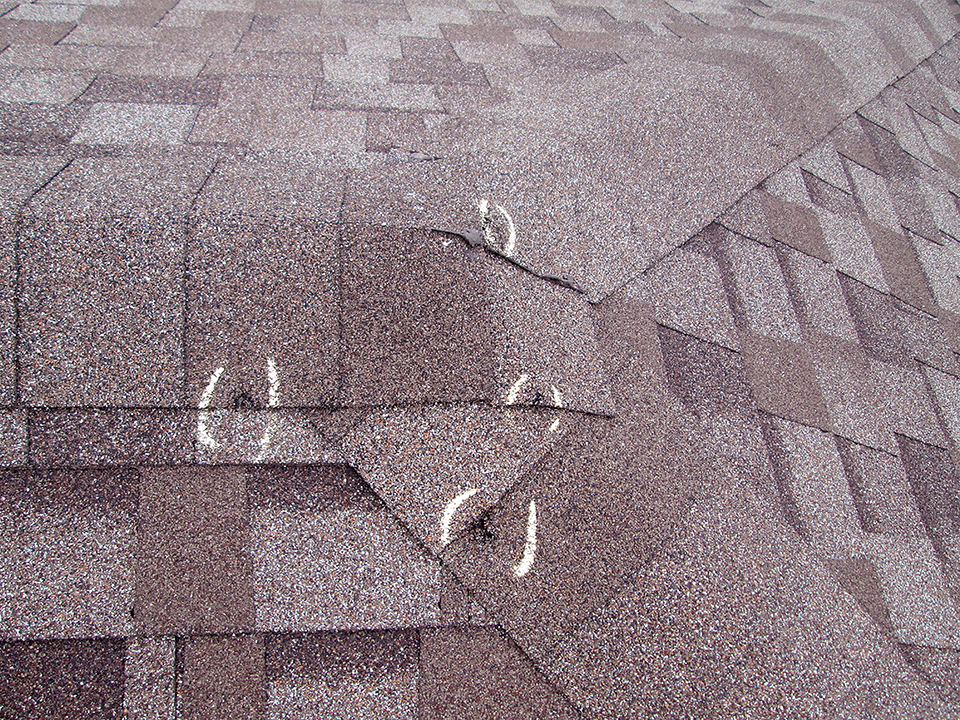
sap affects roof efficiency
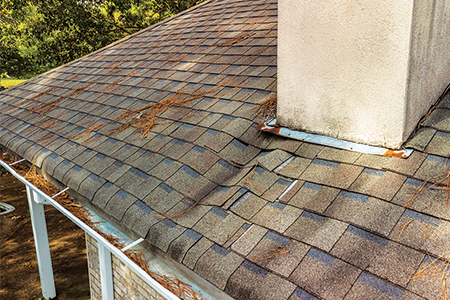
If the tree overhanging your roof is a sap-producing tree, sap may drip directly onto your roof’s surface. Tree sap damages the outer layer of shingles, preventing them from properly shedding water. Excessive moisture is a huge problem for roofs. Overtime it will break down shingles or cause rusting on metal roofs. Furthermore, it adds extra weight to the roof substrate and could cause underlying wood rot. In the end, this could significantly shorten your roof’s effective lifespan.
trees provide easy access for animals
One of the more common issues with having trees in close proximity to your home is that offers an easy path to your roof for destructive animals such as squirrels, birds, possums, raccoons, and termites. When tree branches touch, overhang, or sit even within several feet of your home, it makes your roof look much more attractive to animals.
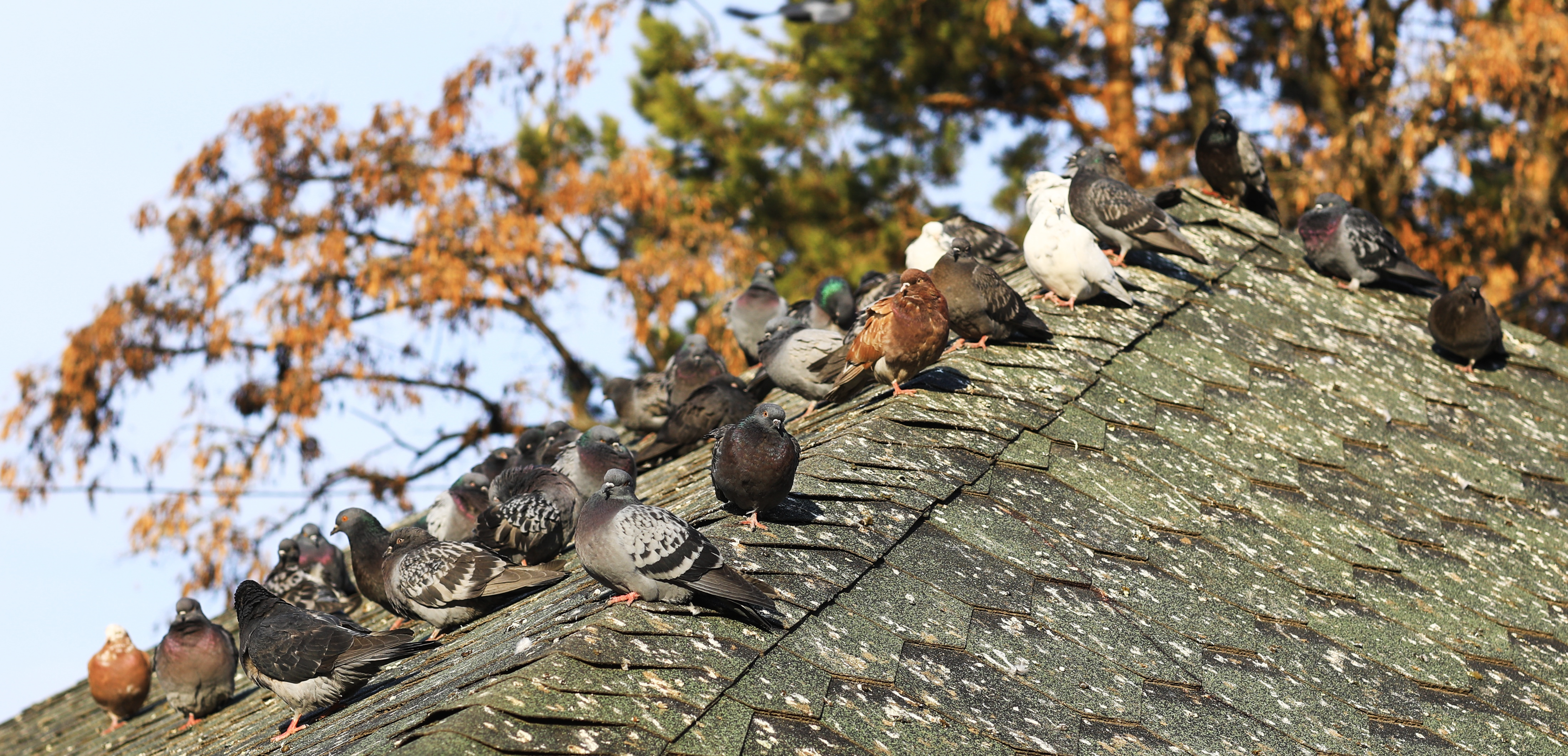
Animals can leave droppings, carry debris, chew and eat through portions of your roof, enter your attic or uncapped chimney, and damage internal portions of your home. Once these animals are there, it can be extremely difficult and expensive to remove them. In the meantime, their presence can cause extensive damage to your roof and lead to issues that require expensive repairs.
how to know if a tree is a potential problem
It is important to note that Weather Stop Roofing’s professionals specialize in roofs – not trees. Our expertise surrounding trees covers their active impact on roofs only. A professional arborist should be consulted regarding the maintenance of trees themselves. That being said, the following is for informational purposes only, and should not be used in lieu of a consultation with a tree expert.
Weather Stop Roofing’s experts always recommend erring on the side of caution when it comes to trees near your roof. Even if an immature tree is not currently causing issues, it is best to be proactive in removing threatening branches or entire trees if they will eventually grow too close to your roof. The larger or more precarious a tree gets, the trickier and more costly its removal or pruning may become. The last thing you want is to learn too late that a tree is causing damage to your roof, as the cost of repairs and tree removal can get expensive.
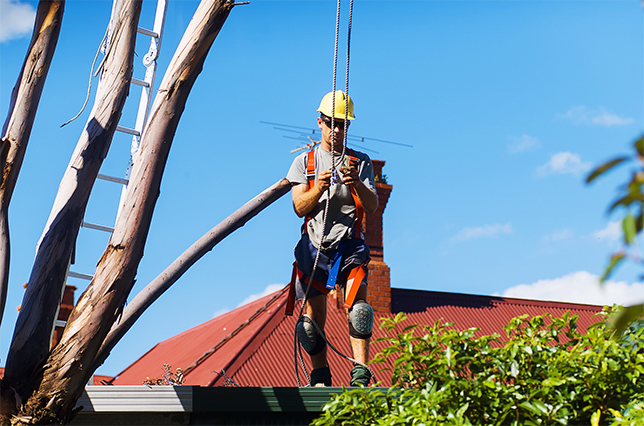
According to some experts, a tree’s branches should not be closer than 6 feet from your home. Depending on the size of the mature tree, you may need to plant larger trees as far as 30 feet away from your home to negate potential issues. As a rule of thumb, some experts recommend dividing a tree’s mature canopy width in half to determine the distance from which the tree should be planted from your home.
While experts at Weather Stop Roofing can assess tree-related roof damage, we recommend contacting a tree excavation servicer to determine whether a tree poses a threat. It is best to consult a professional arborist when considering having a tree or its branches removed.
Not only can it be difficult to determine whether a tree is or will be posing a problem, but it can be extremely dangerous attempting to do the removal without a trained professional.
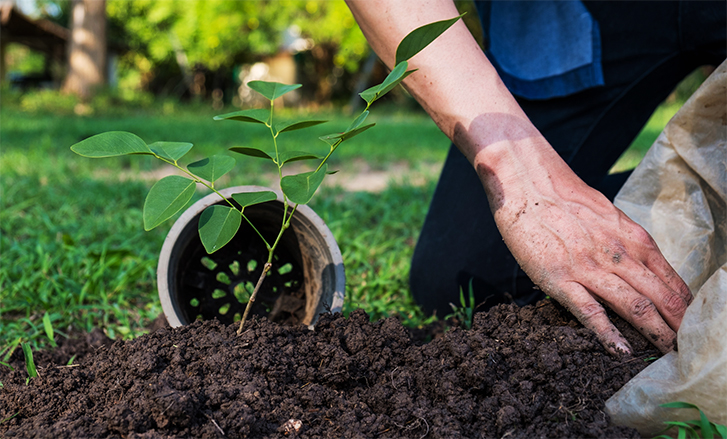
the benefits to your roof of having trees in your yard
For all the potential negative consequences of having trees near your roof, there are also some positive aspects of having a tree in your yard at a safe distance from your roof. There are two primary benefits of having trees in your yard when it comes to preserving the health of your roof:

Secondly, trees planted upwind of your home can take the brunt of wind gusts and help prevent excessive wind damage to your roof materials. This can potentially extend the lifespan of your roof, especially if you have shingles.
With wind being one of the main culprits of storm-related roof damage for shingles, this is one potentially significant benefit of having one or more trees in your yard to take the brunt of the wind that would normally be testing the integrity of your shingles.
Shade, if not in excess, can protect your roof from the sun’s harmful UV rays. UV light damages roofs over time, shortening the life of shingles and other roofing materials. Shade provided by trees during certain times of the day can reduce the amount of UV exposure your roof experiences.
Furthermore, shade can help moderate temperature in your home during the summer months. Instead of the roof system absorbing heat directly, trees can absorb the sun’s heat, keeping your home cooler during the day and cutting energy costs. At night, trees radiate the heat back into the home, helping to maintain a consistent temperature.
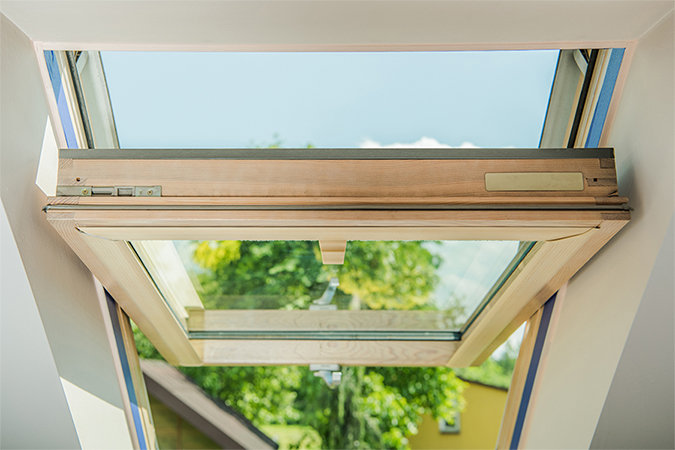
what you can do as a homeowner
There are many actions you can take to preserve the health of your roof and protect it from the damaging effects of trees, all while utilizing the potential benefits of trees to your roof and still enjoying having them on your property.
How Trees Affect Your Roof
Blog by Weather Stop Roofing™
Worried about how trees affect your roof? Trees in close proximity to your roof can cause many problems and potentially shorten the effective life of your roof. Yet, with proper care and placement, trees can also have many benefits when it comes to your roof. In this article we go into all you need to know when considering whether to keep, trim, remove, or plant a tree near your house.
falling trees and branches
There are minor and significant ways in which trees affect your roof. The most common thing people picture when considering trees close to a house is the possibility of them falling and damaging not only their roof, but the home underneath. This also poses a dangerous risk to those residing in the home who could be severely harmed by a falling tree or large branch.
We have all seen those terrible photos following a severe windstorm or tornado. Full size trees with their roots ripped from the ground or large branches broken off by strong winds, sending them crashing onto a roof and causing devastating damage to a home.
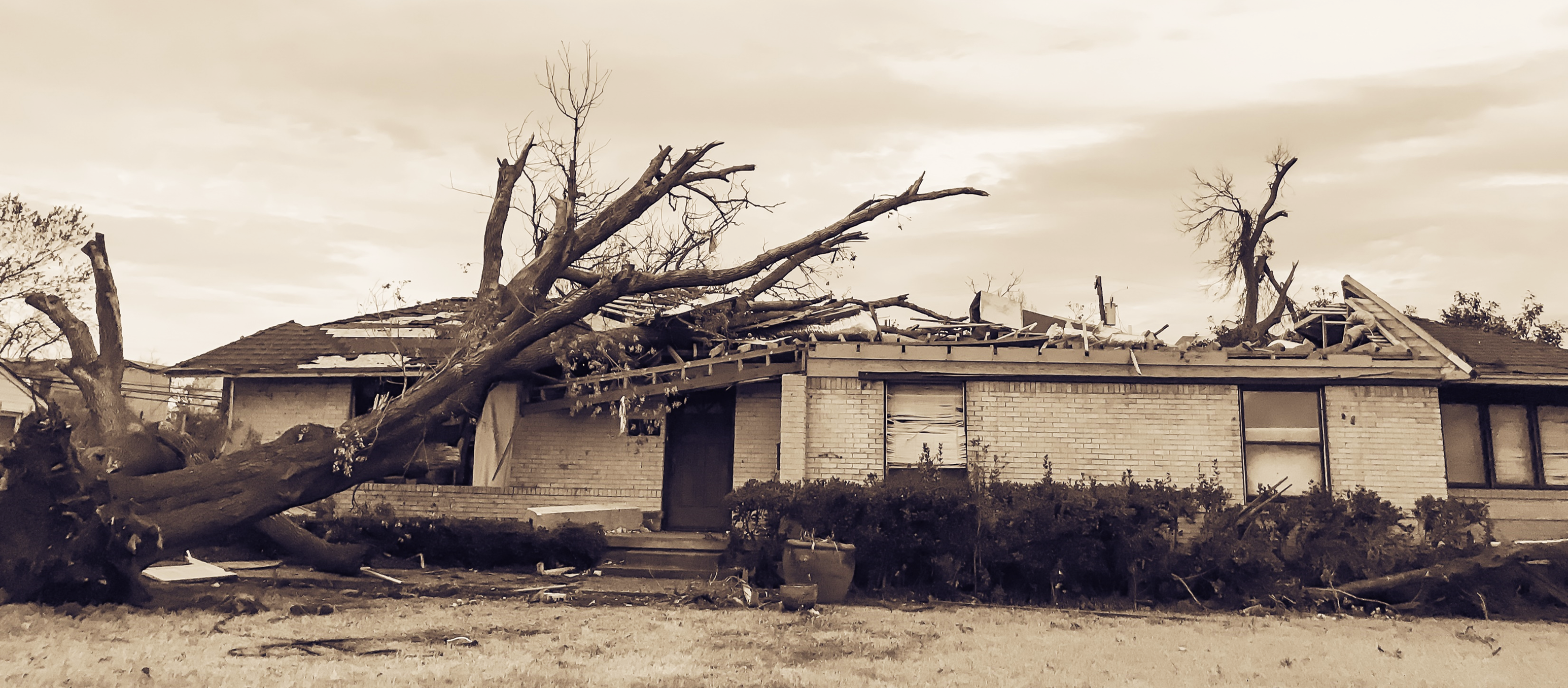
While it may seem extreme or rare, this is a very legitimate risk of having trees too close to a home, and one which should be taken into consideration when deciding whether or not to have a tree or its branches removed. Due to the risk trees can pose to your home and family, you should also be mindful of where you plant new trees in your yard.
trees may cause your roof to hold moisture
One of the more common ways in which close-proximity trees affect your roof has to do with the shade they create.

When a tree excessively shades your roof, it prevents moisture from evaporating efficiently. Consequently, the roof absorbs excess moisture. This leads to algae, moss, and mold growth on your roof. The presence of plant and fungal growths on your roof is not only unsightly, but can also shorten the lifespan of your roof by causing damage to your shingles over time.
The longer the damage goes unaddressed, the more extensive and costly the repairs. In severe cases your entire home may become at risk, increasing the likelihood that a tear-off and full roof replacement will be necessary.

Excess moisture, especially in the presence of plant growth, can add extra weight and stress to your roof system. If left untreated, damage to your shingles or other roof system can lead to rot and decay in the substrate underneath. This affects the integrity of the wood decking that serves as the attachment and support structure for your entire roof system.
branches physically damage shingles
Whether branches are touching your roof or hanging very near its surface, even moderate winds can cause them to scratch your shingles. The outer protective layer of a shingle is made up of tiny granules which serve to hold color and protect your roof from the damaging effects of the sun. Over time, granule loss is inevitable due to the normal wear and tear roofs experience. This is typically what brings a roof to the end of its useful life. However, excessive scratching from tree branches can speed up the process of granule loss, causing shingle breakdown, discoloration splotches on the roof, and/or reduced heat reflecting efficiency, all of which can impact aesthetic and significantly shorten the lifespan of your roof.

leaves and needles damage roofs and affect gutter/downspout efficiency

Without proper and regular maintenance, your gutter system may become clogged with tree debris and be unable to properly revert water. This not only damages your roof, but could affect the integrity of your foundation and lead to leaks in your attic, top floor, and/or basement.

Your gutters and downspouts collect water runoff and push it away from the foundation of your home. Regular gutter cleaning is essential to maintaining healthy, working gutters when you have trees which drop leaves over your home.
dropping nuts and fruits damage roofs in more ways than one
Falling debris is another way in which trees affect your roof. If you have a tree which produces nuts or fruit, you have additional potential problems. Just like leaves and needles, nuts and fruits can clog your gutters and lead to rotting. Furthermore, certain nuts, such as black walnuts, and fruits, such as mulberries, can stain your roof and cause color splotchiness in areas below branches. Due to the weight of some nuts and depending on from what height they are falling, they can also cause impact-related damage similar to hail. Shingles with this sort of damage must be repaired as soon as possible to prevent worsening and extending damage.

sap affects roof efficiency
If the tree overhanging your roof is a sap-producing tree, sap may drip directly onto your roof’s surface. Tree sap damages the outer layer of shingles, preventing them from properly shedding water. Excessive moisture is a huge problem for roofs. Overtime it will break down shingles or cause rusting on metal roofs. Furthermore, it adds extra weight to the roof substrate and could cause underlying wood rot. In the end, this could significantly shorten your roof’s effective lifespan.

trees provide easy access for animals
One of the more common issues with having trees in close proximity to your home is that offers an easy path to your roof for destructive animals such as squirrels, birds, possums, raccoons, and termites. When tree branches touch, overhang, or sit even within several feet of your home, it makes your roof look much more attractive to animals.

Animals can leave droppings, carry debris, chew and eat through portions of your roof, enter your attic or uncapped chimney, and damage internal portions of your home. Once these animals are there, it can be extremely difficult and expensive to remove them. In the meantime, their presence can cause extensive damage to your roof and lead to issues that require expensive repairs.
how to know if a tree is a potential problem
It is important to note that Weather Stop Roofing’s professionals specialize in roofs – not trees. Our expertise surrounding trees covers their active impact on roofs only. A professional arborist should be consulted regarding the maintenance of trees themselves. That being said, the following is for informational purposes only, and should not be used in lieu of a consultation with a tree expert.
Weather Stop Roofing’s experts always recommend erring on the side of caution when it comes to trees near your roof. Even if an immature tree is not currently causing issues, it is best to be proactive in removing threatening branches or entire trees if they will eventually grow too close to your roof. The larger or more precarious a tree gets, the trickier and more costly its removal or pruning may become. The last thing you want is to learn too late that a tree is causing damage to your roof, as the cost of repairs and tree removal can get expensive.

While experts at Weather Stop Roofing can assess tree-related roof damage, we recommend contacting a tree excavation servicer to determine whether a tree poses a threat. It is best to consult a professional arborist when considering having a tree or its branches removed.
Not only can it be difficult to determine whether a tree is or will be posing a problem, but it can be extremely dangerous attempting to do the removal without a trained professional.

According to some experts, a tree’s branches should not be closer than 6 feet from your home. Depending on the size of the mature tree, you may need to plant larger trees as far as 30 feet away from your home to negate potential issues. As a rule of thumb, some experts recommend dividing a tree’s mature canopy width in half to determine the distance from which the tree should be planted from your home.
the benefits to your roof of having trees in your yard
For all the potential negative consequences of having trees near your roof, there are also some positive aspects of having a tree in your yard at a safe distance from your roof. There are two primary benefits of having trees in your yard when it comes to preserving the health of your roof:

Shade, if not in excess, can protect your roof from the sun’s harmful UV rays. UV light damages roofs over time, shortening the life of shingles and other roofing materials. Shade provided by trees during certain times of the day can reduce the amount of UV exposure your roof experiences.
Furthermore, shade can help moderate temperature in your home during the summer months. Instead of the roof system absorbing heat directly, trees can absorb the sun’s heat, keeping your home cooler during the day and cutting energy costs. At night, trees radiate the heat back into the home, helping to maintain a consistent temperature.

Secondly, trees planted upwind of your home can take the brunt of wind gusts and help prevent excessive wind damage to your roof materials. This can potentially extend the lifespan of your roof, especially if you have shingles.
With wind being one of the main culprits of storm-related roof damage for shingles, this is one potentially significant benefit of having one or more trees in your yard to take the brunt of the wind that would normally be testing the integrity of your shingles.
what you can do as a homeowner
There are many actions you can take to preserve the health of your roof and protect it from the damaging effects of trees, all while utilizing the potential benefits of trees to your roof and still enjoying having them on your property.
How Trees Affect Your Roof
Blog by Weather Stop Roofing™
We’re here to answer any and all of your questions. Please don’t hesitate to give us a call or shoot us an email to get the answers!
We want you to be in the know!
If you think your roof may need repairs due to damage resulting from nearby trees, reach out to us to schedule your FREE inspection and estimate!
We’re here to answer any and all of your questions. Please don’t hesitate to give us a call or shoot us an email to get the answers!
We want you to be in the know!
If you think your roof may need repairs due to damage resulting from nearby trees, reach out to us to schedule your FREE inspection and estimate!
